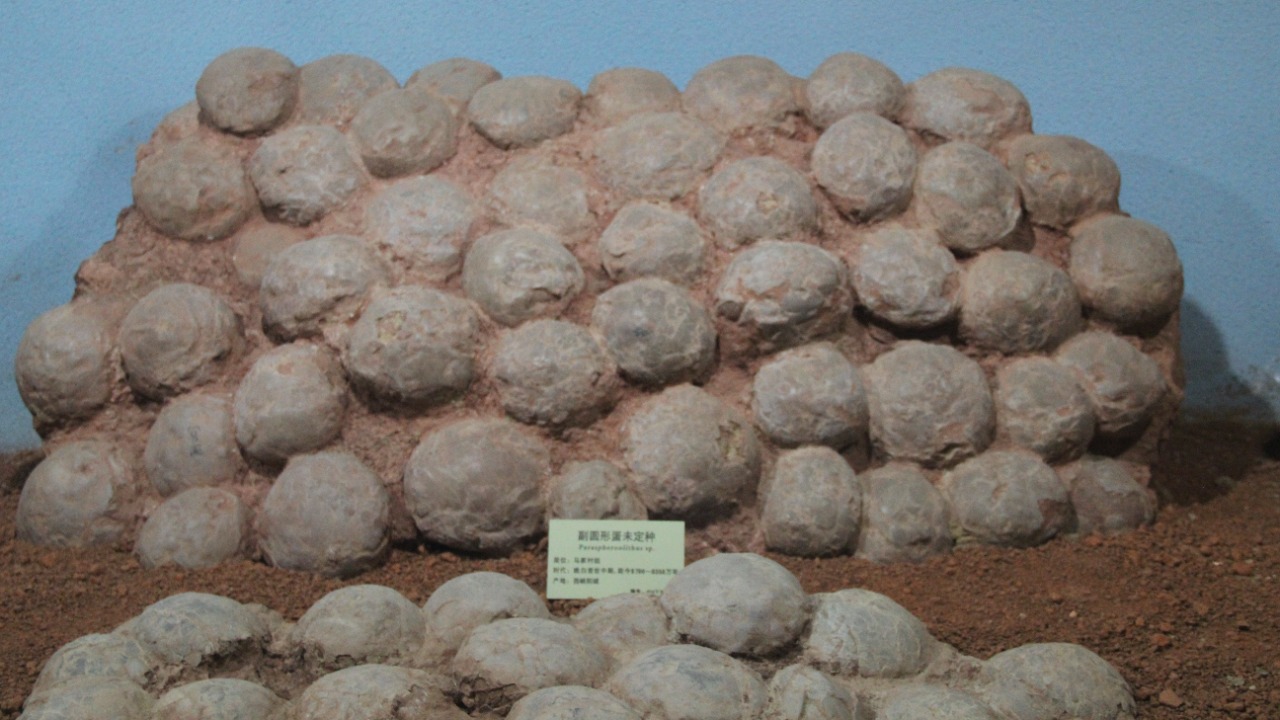
In a remarkable paleontological breakthrough, scientists have uncovered over 70 dinosaur eggs encased within a stone, offering a rare glimpse into the prehistoric past. This discovery, reported on October 23, 2025, reveals the exceptional preservation of the eggs, which could provide new insights into dinosaur behavior and reproduction. The find underscores the enduring potential for surprises in fossil research, as each new discovery adds to our understanding of ancient life on Earth.
The Discovery Process
The unearthing of these dinosaur eggs took place in a remote area, where scientists employed meticulous excavation techniques to reveal the stone that had sealed the eggs for millions of years. The location, kept under wraps to protect the site, was chosen based on geological surveys indicating a high potential for fossil finds. As the team carefully broke open the stone, they were greeted with the astonishing sight of over 70 eggs, each remarkably well-preserved. The moment was a testament to the patience and precision required in paleontological digs, where even the smallest oversight can lead to the loss of invaluable data.
Upon breaking open the stone, the scientists immediately noted the pristine condition of the eggs. The shells appeared intact, a rarity in fossilized eggs, which often suffer from erosion or other forms of degradation over time. This level of preservation suggests that the stone provided a protective environment, shielding the eggs from external elements. The timeline of the excavation, culminating in the public announcement on October 23, 2025, highlights the careful planning and execution that characterized the entire process. For more details on the excavation, you can read the full report here.
Characteristics of the Eggs
The physical characteristics of the dinosaur eggs offer clues about the species they may belong to. Each egg is oval-shaped, with a size comparable to that of a modern-day ostrich egg, suggesting they could belong to a large dinosaur species. The stone’s sealing mechanism, likely a result of sedimentary processes over millions of years, preserved the eggs in a near-perfect state. Preliminary assessments suggest that the eggs might belong to a species of theropod dinosaurs, known for their bird-like characteristics and diverse range of sizes.
Preservation details are particularly noteworthy, as some eggs contain visible embryonic remains. This rare occurrence provides a unique opportunity for scientists to study the developmental stages of dinosaurs, potentially offering insights into their growth patterns and reproductive strategies. The intact shells and embryonic remains are a treasure trove for paleontologists, who can use modern technology to analyze the eggs without causing damage. These findings could significantly advance our understanding of dinosaur biology and evolution.
Scientific Implications
The discovery of these dinosaur eggs has profound implications for our understanding of dinosaur nesting and reproductive behaviors. By studying the arrangement and condition of the eggs, scientists can infer how these ancient creatures might have cared for their young. This find could challenge existing theories about dinosaur parenting, suggesting more complex social behaviors than previously thought. The eggs’ preservation allows for detailed analysis, which could reveal new information about the environmental conditions in which these dinosaurs lived and reproduced.
Expert reactions to the discovery have been overwhelmingly positive, with many scientists eager to begin detailed analyses of the specimens. Initial plans include using advanced imaging techniques to examine the eggs’ internal structures, potentially uncovering new data about dinosaur embryology. This discovery not only fills gaps in our prehistoric knowledge but also demonstrates the importance of continued exploration and excavation in uncovering Earth’s ancient history. The broader context of this find, as reported on October 23, 2025, emphasizes the ongoing quest to piece together the complex puzzle of life on Earth millions of years ago.
More from MorningOverview